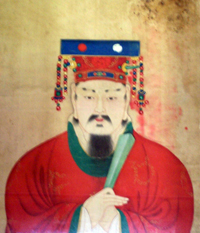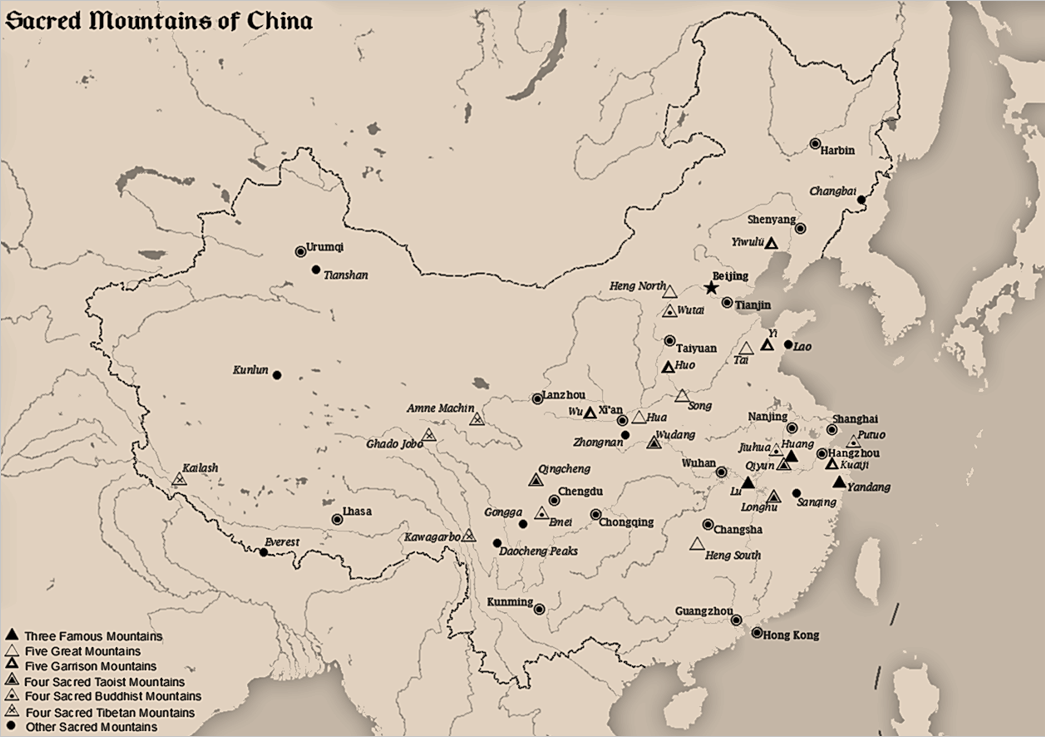|
North–South States Period
The Northern and Southern States period (698–926 CE) is the period in Korean history when Unified Silla and Balhae coexisted in the south and north of the peninsula, respectively. Unified Silla After the unification wars, the Tang Dynasty established territories in the former Goguryeo, and began to administer and establish communities in Baekje. Silla attacked the Chinese in Baekje and northern Korea in 671. The Tang Dynasty then invaded Silla in 674 but Silla defeated the Tang army in the north. Silla drove the Tang forces out of the peninsula by 676 to achieve unification of most of the Three Kingdoms. Unified Silla was a golden age of art and culture, and Buddhism became a large part of Silla culture. Buddhist monasteries such as the Bulguksa are examples of advanced Korean architecture and Buddhist influence. State-sponsored art and architecture from this period include Hwangnyongsa Temple, Bunhwangsa Temple, and Seokguram Grotto, a World Heritage Site. Unified Sill ... [...More Info...] [...Related Items...] OR: [Wikipedia] [Google] [Baidu] |
Division Of Korea
The division of Korea began with the defeat of Japan in World War II. During the war, the Allied leaders considered the question of Korea's future after Japan's surrender in the war. The leaders reached an understanding that Korea would be liberated from Japan but would be placed under an international trusteeship until the Koreans would be deemed ready for self-rule. In the last days of the war, the U.S. proposed dividing the Korean peninsula into two occupation zones (a U.S. and Soviet one) with the 38th parallel as the dividing line. The Soviets accepted their proposal and agreed to divide Korea. It was understood that this division was only a temporary arrangement until the trusteeship could be implemented. In December 1945, the Moscow Conference of Foreign Ministers resulted in an agreement on a five-year four-power Korean trusteeship. However, with the onset of the Cold War and other factors both international and domestic, including Korean opposition to the trustee ... [...More Info...] [...Related Items...] OR: [Wikipedia] [Google] [Baidu] |
Gyeongju
Gyeongju ( ko, 경주, ), historically known as ''Seorabeol'' ( ko, 서라벌, ), is a coastal city in the far southeastern corner of North Gyeongsang Province in South Korea. It is the second largest city by area in the province after Andong, covering with a population of 264,091 people (as of December 2012.) Gyeongju is southeast of Seoul, and east of Daegu. The city borders Cheongdo and Yeongcheon to the west, Ulsan to the south and Pohang to the north, while to the east lies the coast of the Sea of Japan. Numerous low mountains—outliers of the Taebaek range—are scattered around the city. Gyeongju was the capital of the ancient kingdom of Silla (57 BC – 935 AD), which ruled about two-thirds of the Korean Peninsula at its height between the 7th and 9th centuries, for close to one thousand years. Later Silla was a prosperous and wealthy country, and its metropolitan capital of Gyeongju was the fourth largest city in the world. A vast number of archaeological s ... [...More Info...] [...Related Items...] OR: [Wikipedia] [Google] [Baidu] |
Dae Joyeong
Dae Joyeong (died 719) (; or in Korean) or Da Zuorong (大祚榮, 大祚荣, in Chinese), also known as King Go (; in Korean; Gao in Chinese), established the state of Balhae, reigning from 699 to 719. Life Early life Dae Joyeong was the first son of general Dae Jung-sang, who was also known as Sari Geolgeol Jungsang (Hangul: 사리걸걸중상, Hanja: 舍利乞乞仲象) or Dae Geolgeol Jungsang (Hangul: 대걸걸중상, Hanja: 大乞乞仲象). Historical sources give different accounts of Dae Joyeong's ethnicity and background. Among the official dynastic history works, the '' New Book of Tang'' refers to Dae Joyeong and his state as Sumo Mohe (related to Jurchens and later Manchus) affiliated with Goguryeo. The ''Old Book of Tang'' also states Dae's ethnic background as Mohe but adds that he was "高麗別種" (''gaoli biezhong''). The term is interpreted as meaning "a branch of the Goguryeo people" by South and North Korean historians, but as "distinct from Go ... [...More Info...] [...Related Items...] OR: [Wikipedia] [Google] [Baidu] |
Goryeo
Goryeo (; ) was a Korean kingdom founded in 918, during a time of national division called the Later Three Kingdoms period, that unified and ruled the Korean Peninsula until 1392. Goryeo achieved what has been called a "true national unification" by Korean historians as it not only unified the Later Three Kingdoms but also incorporated much of the ruling class of the northern kingdom of Balhae, who had origins in Goguryeo of the earlier Three Kingdoms of Korea. The name "Korea" is derived from the name of Goryeo, also spelled Koryŏ, which was first used in the early 5th century by Goguryeo. According to Korean historians, it was during the Goryeo period that the individual identities of Goguryeo, Baekje, and Silla were successfully merged into a single entity that became the basis of modern-day ' Korean' identity. Throughout its existence, Goryeo, alongside Unified Silla, was known to be the "Golden Age of Buddhism" in Korea. As the state religion, Buddhism achieved its ... [...More Info...] [...Related Items...] OR: [Wikipedia] [Google] [Baidu] |
Gyeongsun Of Silla
Gyeongsun of Silla (896–978) was the 56th and final ruler of the Korean kingdom of Silla. Biography A sixth-generation descendant of King Munseong, he was the son of Hyogong by Princess Gyea, who was the daughter of King Heongang. His wife was Lady Jukbang (죽방부인) of the Juksan Park clan, his eldest son was Crown Prince Maui, and his youngest son was Beomgong. Gyeongsun was placed on the throne by the Hubaekje king Gyeon Hwon after the Hubaekje forces sacked Gyeongju in 927. The kingdom was already in an extremely weakened state, so Gyeongsun reigned over a tiny remnant of the former Silla territory until finally abdicating in favour of Taejo of Goryeo in 935. He remarried Taejo's daughter Princess Nangrang (낙랑공주) and was appointed ''sasim-gwan'' (사심관, inspector-general) of Gyeongju, becoming the first of Goryeo's ''sasim-gwan'' system. He lived out the remainder of his life near the Goryeo capital (modern-day Kaesong). [...More Info...] [...Related Items...] OR: [Wikipedia] [Google] [Baidu] |
Later Three Kingdoms
The Later Three Kingdoms period (889-935 AD) of ancient Korea saw a partial revival of the old three kingdoms which had dominated the peninsula from the 1st century BC to the 7th century AD. After the Unified Silla kingdom had ruled Korea alone from 668 AD, it slowly began to decline and the power vacuum this created led to several rebellious states rising up and taking on the old historical names of Korea's ancient kingdoms. A messy period of alliances and in-fighting followed, but one state would once again establish a dominant position – Goryeo, itself named in homage to the earlier northern Goguryeo kingdom – and form a unified Korean state and a dynasty which would last for over 500 years. The Fall of Silla The Unified Silla Kingdom (668- 935 AD) had held sway over the Korean peninsula for three centuries, but the state was in a slow decline. The rigidity of its class structure based on the Bone rank system meant that few could rise above the position of their birth and ... [...More Info...] [...Related Items...] OR: [Wikipedia] [Google] [Baidu] |
Sacred Mountains Of China
The Sacred Mountains of China are divided into several groups. The ''Five Great Mountains'' () refers to five of the most renowned mountains in Chinese history, and they were the subjects of imperial pilgrimage by emperors throughout ages. They are associated with the supreme God of Heaven and the five main cosmic deities of Chinese traditional religion. The group associated with Buddhism is referred to as the ''Four Sacred Mountains of Buddhism'' (), and the group associated with Taoism is referred to as the ''Four Sacred Mountains of Taoism'' (). The sacred mountains have all been important destinations for pilgrimage, the Chinese expression for pilgrimage () being a shortened version of an expression which means ''"paying respect to a holy mountain"'' (). The Five Great Mountains The ''Five Great Mountains'' or ''Wuyue'' are arranged according to the five cardinal directions of Chinese geomancy, which includes the center as a direction. The grouping of the five mountains ... [...More Info...] [...Related Items...] OR: [Wikipedia] [Google] [Baidu] |
Mount Jiuhua
Mount Jiuhua () located in Chizhou, Anhui Province in China is an important Buddhist site and natural scenic spot. It is one of the four famous Buddhist mountains in China, one of the first batch of 5A level scenic spots in China, one of the first batch of natural and cultural heritage sites in China, and the main scenic spot of "two mountains and one lake" (Jiuhua Mountain, Taiping Lake, Huangshan) tourism development strategy in Anhui Province. The planned area of the scenic spot is 120 square kilometers, and the protected area is 174 square kilometers, which is composed of 11 scenic spots. History Mount Jiuhua was called Mount Lingyang during the time of the Han Dynasty. It was called Mount Jiuzi (九子山) in Liang and Chen Dynasties of South Dynasties. A legend says that the great poet Li Bai of Tang Dynasty travelled here and wrote "Magic is divided to two branches, sacred mountain generates nine glories." (), giving rise to its name Mount Jiuhua. Mount Jiuhua is l ... [...More Info...] [...Related Items...] OR: [Wikipedia] [Google] [Baidu] |
Kim Gyo-gak
Gim Gyo-gak (김교각, 金喬覺, 696-794), or Jin Qiaojue in Mandarin, also known as his buddhist name Jijang(地藏), was a Korean Buddhist monk believed to be the manifestation of Ksitigarbha at Mount Jiuhua, one of the four sacred mountains of Chinese Buddhism, located in Anhui province, China. Gim Gyo-gak was a Silla prince, who became interested in Buddhism when visiting Tang China at the age of 24. Upon returning to Silla, he decided to become a monk. In 719, he returned to China to cultivate himself at Mount Jiuhua. He died in 794 in Mount Jiuhua, at the age of 99. The monks there believed that Ksitigarbha was reincarnated in him. Mount Jiuhua Mount Jiuhua () located in Chizhou, Anhui Province in China is an important Buddhist site and natural scenic spot. It is one of the four famous Buddhist mountains in China, one of the first batch of 5A level scenic spots in China, one of the ... thereafter became the sacred site of Ksitigarbha. References Mount Ji ... [...More Info...] [...Related Items...] OR: [Wikipedia] [Google] [Baidu] |
Kim Hwasang
Kim Hwasang (), also known in Chinese as Wuxiang (, , 684–762), was a Korean master of Chan Buddhism who lived in Sichuan, China, whose form of Chan teaching was independent of East Mountain Teaching and Huineng. His teachings were amongst the first streams of Chan Buddhism transmitted to Tibet. Chan, the Tangut and Kim Hwasang Solonin links the Tangut people, the Helan Mountains and Baotang Wuzhu: Yün-Hua Jan (1986: pp. 27–28) states: Buswell (2005: p. 191) states: Transmission of Chan to the Nyingma school Chan Buddhism was introduced to the Nyingma school of Tibetan Buddhism in three principal streams: the teachings of Kim Hwashang transmitted by Sang Shi in c750 CE; the lineage of Baotang Wuzhu was transmitted within Tibet by Yeshe Wangpo; and the teaching of Moheyan, which were a synthesis of the East Mountain and Baotang schools. Legend states that Trisong Detsen (742–797) invited Moheyan to teach at Samye. Moheyan had been teaching at Dunhuang, ... [...More Info...] [...Related Items...] OR: [Wikipedia] [Google] [Baidu] |

.jpg)


